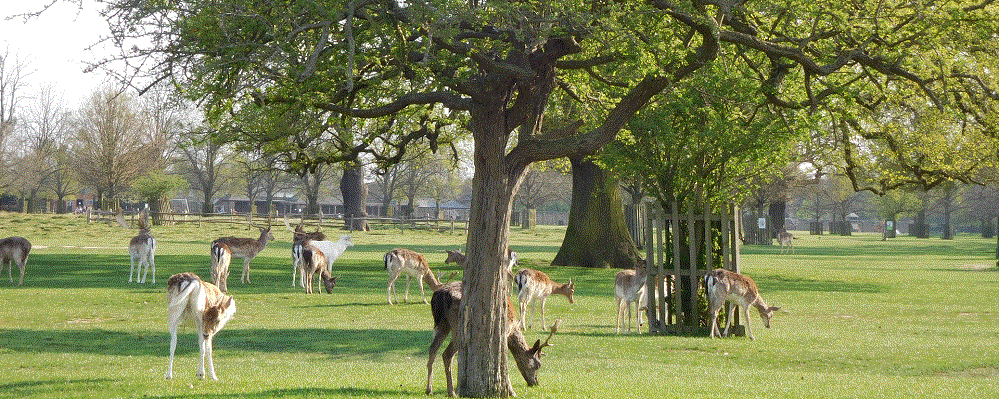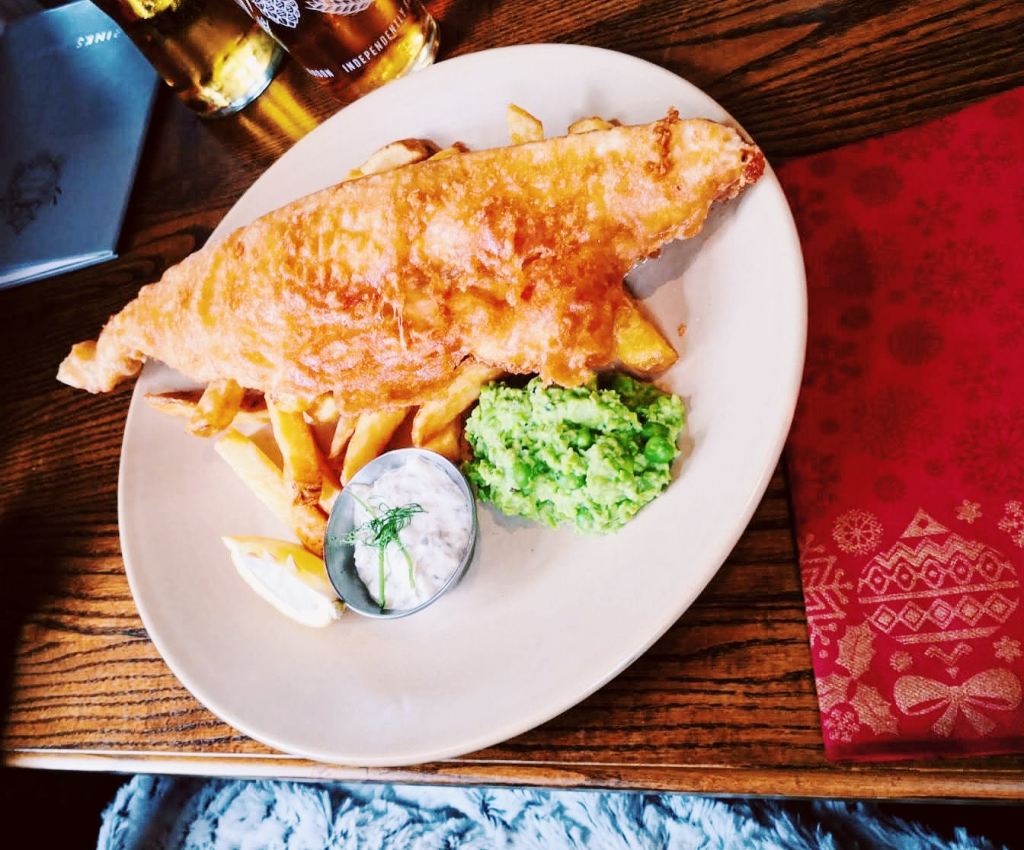Bushy Park, one of the eight Royal Parks in London, is full of wildlife that can often be spotted throughout the park.
And the most famous residents within Bushy Park must be the Red and Fallow Deer, which are freely roaming around the park.
In fact, Bushy Park is a deer park, but what does that mean exactly?
The National Trust (2020) defines deer parks as “… large, enclosed areas of land created for the purpose of housing deer and other game. They are usually associated with castles and great residences.”
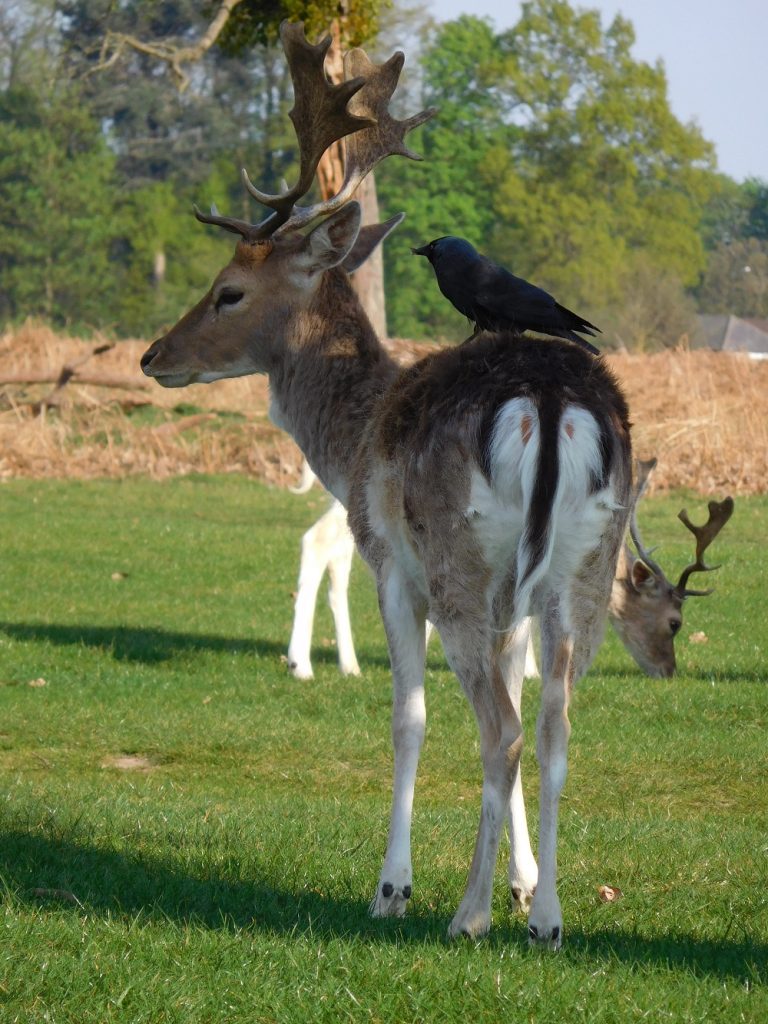
Bushy Park used to be the hunting ground for Henry VIII back in the 16th century and is now home to more than 300 Red and Fallow Deer.
These deer parks were multi – purpose spaces and had a variety of uses. I already mentioned hunting, but they were also used for relaxation and sometimes even growing certain resources.
Many of them contain a mixture of different spaces and plants as well as features. You can find woodlands and grazing pastures, but also fishponds, memorials and statues, little plantations and sometimes even hunting lodges.
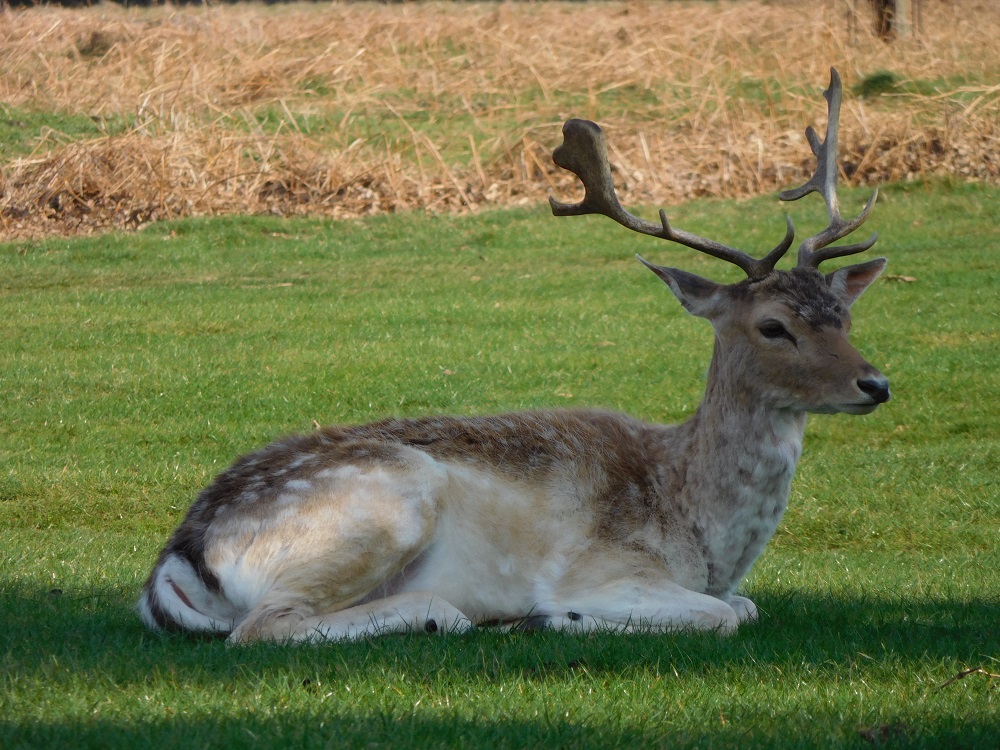
The deer are essential to the maintenance of the park. They graze anywhere in the park, which creates more plant diversity and variety in structure of the environment compared to cutting. As a result, the grassland and its other inhabitants benefit and can flourish.
The Red Deer are native to the British Isles and is its largest mammal. They have glossy red coats during the summer time. Fallow Deer are smaller and tend to have spotted coats in the summer that are cream or a dark brown in colour.
During autumn, the rut (breeding season) starts and the young are born between May and July. Normally the mothers hide their young in the long grasses found around the park and the bracken.
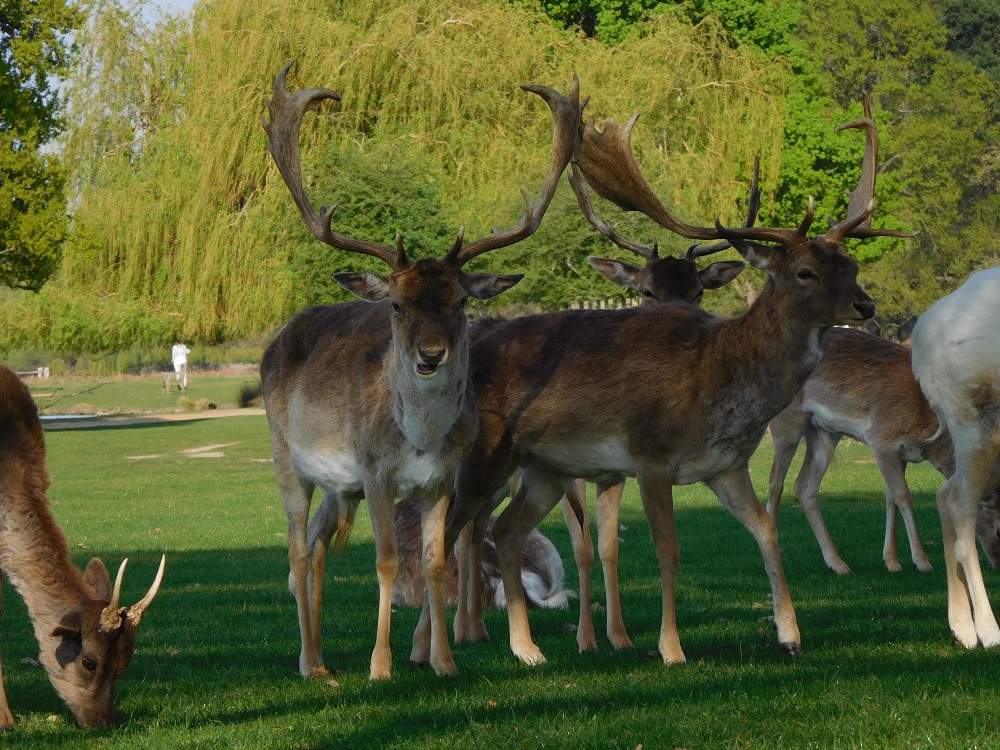
The deer population is controlled and managed by the Royal Parks in accordance with the guidelines from the British Deer Society to keep the population around the same size. The practice is referred to as humane culling.
It might seem cruel to kill a certain number of deer each year. However, if the deer population was to grow and grow, this would have some fatal consequences for the deer themselves and other wildlife in the park.
Food would become scarce which would lead to loss of body fat, malnutrition and ultimately death in the winter months. Parasites can develop and can cause diseases in the deer.
Interesting fact, the deer are actually under veterinary supervision and their welfare is monitored regularly.
Bushy Park is a fantastic place to see these animals in their natural habitat and to observe them. The deer are not as scared as other deer in forests, which offers a great opportunity to get a better look at them and take great wildlife pictures.
However, the deer are wild animals and a minimum distance should be kept at all times of 50 meters. This is to protect yourself, but also the deer. It is prohibited to touch, feed or take pictures of the deer at close range.
Resources:
National Trust (2020) “What is a deer park” https://www.nationaltrust.org.uk/features/what-is-a-deer-park (Accessed: 18.04.2020)

